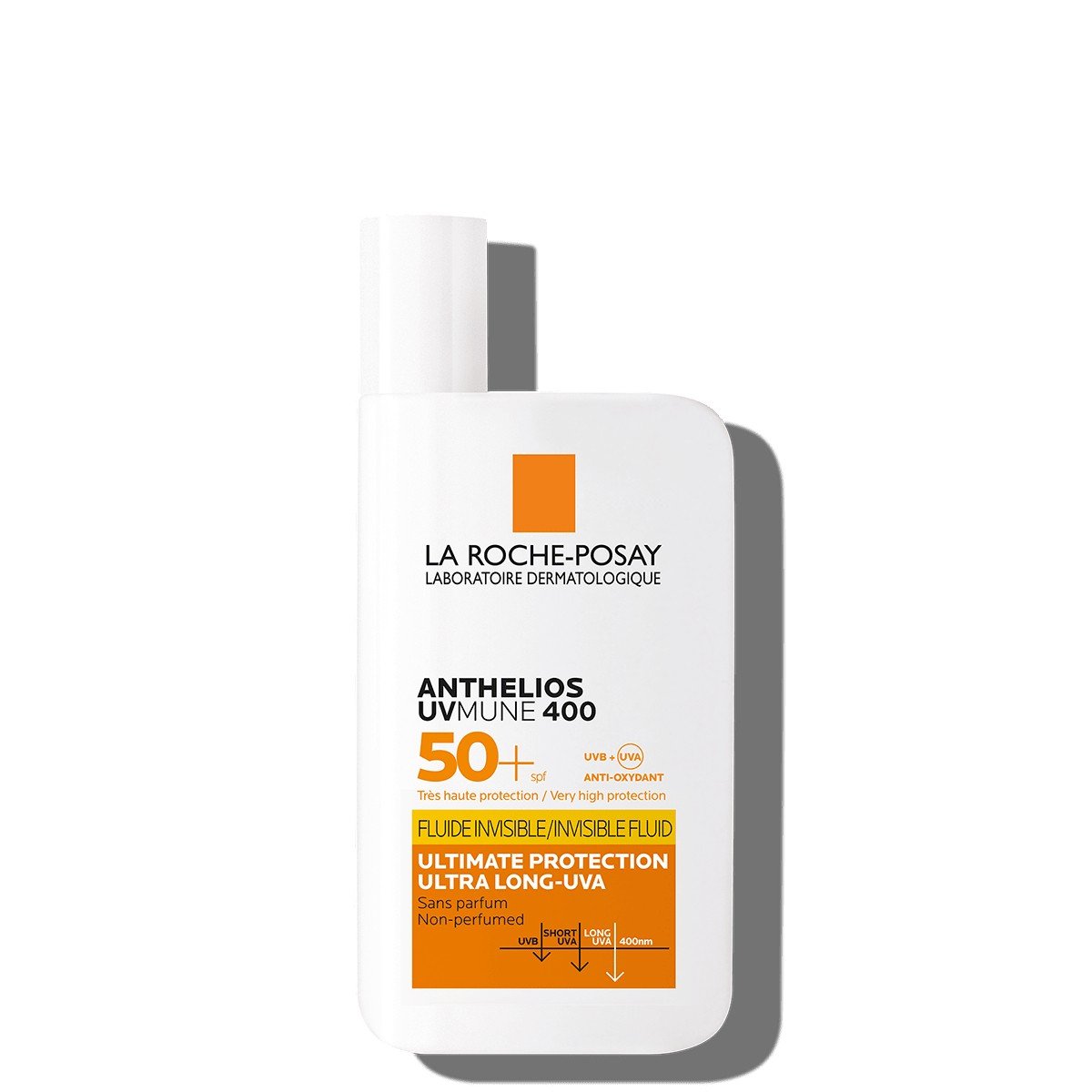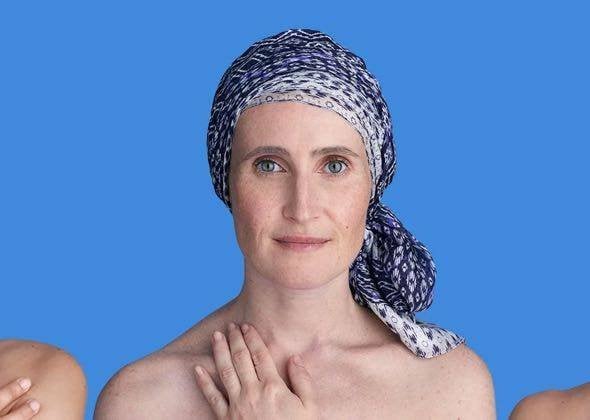Razele ultraviolete: Ce sunt?
Știai că razele ultraviolete sunt invizibile ochiului uman? Acest lucru este datorat faptului că ele sunt o formă de radiație electromagnetică, ce provine direct de la soare. Ele pot fi împărțite în două categorii în funcție de lungimea de undă:
- UVA (cu lungime de undă mai mare)
- UVB (cu lungime de undă mai mică)
În plus, ele au un nivel de energie mai ridicat decât lumina vizibilă și pot avea efecte nocive asupra pielii, ochilor și sistemului imunitar al persoanelor care se expun la acestea pe perioade îndelungate, fără protecție adecvată. Radiațiile ultraviolete pot cauza arsuri solare, îmbătrânirea prematură a pielii (află din articolul nostru de ce folosirea unei creme de față cu SPF oferă o protecție solară anti-aging), schimbarea sau apariția unor noi alunițe, care poate duce chiar la cancer de piele.
Pătrunderea razelor UV prin piele
Este esențial de reținut că, deși unele dintre radiații sunt absorbite de atmosferă și nu ajung pe suprafața pământului (razele UVC), UVA și UVB trec prin piele atunci când aceasta este expusă la soare.
Radiațiile ultraviolete (UVA și UVB) pot penetra pielea prin epidermă, stratul cutanat superficial. Cantitatea și adâncimea până la care radiațiile UV pot pătrunde în piele depinde de câțiva factori, incluzând lungimea de undă a razelor, cantitatea de melanină din piele și modul în care are loc expunerea la soare.
Cum te poți proteja de aceste raze ultraviolete?
Protecția pielii împotriva razelor UVA și UVB este esențială pentru a-ți menține pielea sănătoasă și a preveni problemele grave. Iată câțiva pași de bază pentru a te proteja împotriva acestor raze ultraviolete nocive.
Ferește-te de soare
Unul dintre cele mai eficiente moduri de a te proteja împotriva radiațiilor este să îți limitezi expunerea la soare, în special în timpul orelor de vârf, când intensitatea atinge nivelul maxim. Intervalul orar în cauză este cuprins, în general, între 10 și 16.
Petrece mult timp la umbră și în locuri răcoroase
O altă măsură importantă de a te proteja este să stai cât mai mult timp la umbră, mai ales atunci când radiația este cea mai puternică. Evitând contactul direct cu razele soarelui te va ajuta să reduci riscul de a suferi deteriorări ale pielii. Așadar, atunci când te afli în exterior, încearcă să stai cât mai mult timp la adăpostul copacilor, umbrelelor sau a unor suprafețe acoperite.
În plus, expunerea prelungită la soare duce la o creștere a temperaturii corpului, lucru care poate cauza deshidratare, insolație, disconfort și oboseală oculară. Adăpostindu-te la umbră, le vei putea oferi o pauză binemeritată ochilor, reducând efortul la care sunt supuși în urma expunerii la lumina soarelui.
Folosește protecție solară
Bineînțeles, principala măsură de luat împotriva razelor UVA și UVB este utilizarea de protecție solară cu spectru larg, care să te poată apăra de ambele tipuri de radiații nocive. Folosește un produs cu factor de protecție solară (SPF) potrivit tipului tău de piele și activităților pe care le ai de obicei în aer liber. La Roche-Posay oferă o gamă variată de produse de protecție solară de calitate, create pentru pielea sensibilă, cu bună eficacitate împotriva UVA și UVB.
Aplicarea corectă a protecției solare
Modul în care folosim aceste produse de protecție solară cu SPF 30 sau SPF 50 este esențial pentru a putea asigura o protecție adecvată.. Asigură-te că folosești o cantitate suficientă astfel încât să acoperi toate zonele expuse ale pielii, inclusiv fața, gâtul, urechile, brațele și picioarele. Nu uita de zonele sensibile precum buzele, scalpul și mâinile.
Aplică produsul cu cel puțin 15 minute înainte de a te expune la soare, după ce ai intrat în contact cu apa și în timpul activităților fizice. Amintește-ți că reaplicarea este importantă la maximum două ore după cea precedentă. De asemenea, nu uita să aplici protecție solară și după ce te expui la soare. Un produs recomandat este loțiunea după expunerea la soare Anthelios POST-UV Exposure.
Rutina de îngrijire ar trebui să includă protecția solară pentru față pe toată durata anului, dar mai ales vara. Este esențial să alegi un produs creat special pentru zona feței, deoarece aceasta are anumite caracteristici și nevoi specifice diferite de cele ale pielii din celelalte zone ale corpului.
Protecție solară cu spectru larg pentru piele sensibilă
Dacă ai pielea sensibilă, o poți apăra în fața razelor UV cu La Roche-Posay Anthelios UVMUNE 400 Fluid invizibil SPF50+. Acesta oferă o protecție optimă împotriva ambelor tipuri de radiații UV, prevenind deteriorarea cauzată de către soare. Textura sa ușoară, non-grasă nu încarcă porii și nu lasă reziduuri, ceea ce îl face un produs potrivit pentru utilizare zilnică.

De asemenea, se poate aplica rapid doar întinzându-l pe toate zonele expuse, cum ar fi fața, gâtul și mâinile. Pentru protecție maximă, reaplică fluidul la fiecare două ore, mai ales dacă faci sport sau transpiri.
Produsul are un SPF foarte ridicat și o acoperire largă datorită formulei sale cu Mexoryl400. Aceasta este și rezistentă la apă, ceea ce presupune că acoperirea va persista și în timpul altor activități.
Tehnologia sa NETLOCK permite filtrului UV să se prindă de suprafața pielii, astfel formând ca o "plasă" protectoare care oprește radiațiile să ajungă la piele. Produsul conține și glicerină, un ingredient activ care ajută la hidratare, pentru a preveni deshidratarea pielii în urma acțiunii soarelui și a căldurii.
Protecție solară cu spectru larg
Dacă ești în căutarea unei protecții matifiante împotriva radiațiilor solare, care să elimine luciul pielii, atunci alegerea optimă este Anthelios UVMUNE 400 Oil Control Gel-cremă SPF50+. Protecția solară de calitate are un SPF foarte ridicat și o formulă de gel-cremă ușoară, non-grasă, care se absoarbe repede. Astfel, vorbim despre un produs potrivit pentru a fi utilizat sub baza de machiaj.

Deoarece are efect matifiant și previne luciul pielii, poate fi recomandat și pentru tenul gras. Pentru a asigura o protecție optimă, este esențial să aplici produsul într-un strat generos și să îl reaplici frecvent.
Dacă ai tenul uscat, îți recomandăm un produs extra hidratant, Anthelios UVMUNE 400 Cremă hidratantă SPF50+, care hidratează pielea în profunzime și o protejează în același timp de razele UV ultra-lungi.

Protecția solară este esențială pentru a-ți apăra pielea de efectele nocive ale razelor UV ale soarelui. Este esențial să o folosești în mod corect, folosind o cantitate destul de mare și reaplicând-o la fiecare câteva ore, mai ales după ce ai înotat sau transpirat. Utilizarea zilnică a acestor produse, chiar și în zilele înnorate, pot proteja pielea pe termen lung și pot preveni deteriorarea asociată cu expunerea la razele ultraviolete.





